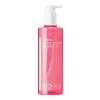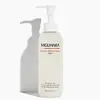What's inside
What's inside
 Key Ingredients
Key Ingredients

 Benefits
Benefits

 Concerns
Concerns

 Ingredients Side-by-side
Ingredients Side-by-side

Caprylic/Capric Triglyceride
MaskingIsopropyl Palmitate
EmollientPEG-20 Glyceryl Triisostearate
EmollientGlycine Soja Oil
EmollientEthylhexylglycerin
Skin ConditioningOlea Europaea Fruit Oil
MaskingWater
Skin ConditioningGuaiazulene
AntimicrobialOenothera Biennis Oil
EmollientDaucus Carota Sativa Seed Oil
EmollientCamellia Japonica Seed Oil
EmollientMoringa Oleifera Seed Oil
EmollientCeramide NP
Skin ConditioningSalvia Officinalis Oil
MaskingArgania Spinosa Kernel Oil
EmollientPersea Gratissima Oil
Skin ConditioningAllantoin
Skin ConditioningTocopherol
AntioxidantMelaleuca Alternifolia Leaf Oil
AntioxidantPanthenol
Skin ConditioningVitis Vinifera Seed Oil
EmollientJuglans Regia Seed Oil
Skin ConditioningZinc PCA
HumectantCapryloyl Salicylic Acid
ExfoliatingButylene Glycol
HumectantAsiaticoside
AntioxidantMadecassic Acid
Skin ConditioningAsiatic Acid
Skin Conditioning1,2-Hexanediol
Skin ConditioningCentella Asiatica Extract
CleansingHouttuynia Cordata Extract
Skin ConditioningXanthan Gum
EmulsifyingPortulaca Oleracea Extract
Skin ConditioningSaururus Chinensis Extract
Skin ConditioningArtemisia Capillaris Extract
Caprylyl Glycol
EmollientAloe Barbadensis Leaf Extract
EmollientAcorus Calamus Root Extract
PerfumingHyaluronic Acid
HumectantGlucose
HumectantSodium Hyaluronate
HumectantMadecassoside
AntioxidantChondrus Crispus Extract
Skin ConditioningMelaleuca Alternifolia Leaf Extract
PerfumingHydroxypropyltrimonium Hyaluronate
Hydrolyzed Hyaluronic Acid
HumectantSodium Acetylated Hyaluronate
HumectantSodium Hyaluronate Crosspolymer
HumectantHydrolyzed Sodium Hyaluronate
Skin ConditioningPotassium Hyaluronate
Skin ConditioningCitrus Aurantium Bergamia Fruit Oil
MaskingLimonene
PerfumingLinalool
PerfumingCaprylic/Capric Triglyceride, Isopropyl Palmitate, PEG-20 Glyceryl Triisostearate, Glycine Soja Oil, Ethylhexylglycerin, Olea Europaea Fruit Oil, Water, Guaiazulene, Oenothera Biennis Oil, Daucus Carota Sativa Seed Oil, Camellia Japonica Seed Oil, Moringa Oleifera Seed Oil, Ceramide NP, Salvia Officinalis Oil, Argania Spinosa Kernel Oil, Persea Gratissima Oil, Allantoin, Tocopherol, Melaleuca Alternifolia Leaf Oil, Panthenol, Vitis Vinifera Seed Oil, Juglans Regia Seed Oil, Zinc PCA, Capryloyl Salicylic Acid, Butylene Glycol, Asiaticoside, Madecassic Acid, Asiatic Acid, 1,2-Hexanediol, Centella Asiatica Extract, Houttuynia Cordata Extract, Xanthan Gum, Portulaca Oleracea Extract, Saururus Chinensis Extract, Artemisia Capillaris Extract, Caprylyl Glycol, Aloe Barbadensis Leaf Extract, Acorus Calamus Root Extract, Hyaluronic Acid, Glucose, Sodium Hyaluronate, Madecassoside, Chondrus Crispus Extract, Melaleuca Alternifolia Leaf Extract, Hydroxypropyltrimonium Hyaluronate, Hydrolyzed Hyaluronic Acid, Sodium Acetylated Hyaluronate, Sodium Hyaluronate Crosspolymer, Hydrolyzed Sodium Hyaluronate, Potassium Hyaluronate, Citrus Aurantium Bergamia Fruit Oil, Limonene, Linalool
Water
Skin ConditioningGlycerin
HumectantCoco-Betaine
CleansingAcrylates/Hema Copolymer
Butylene Glycol
HumectantCamellia Sinensis Leaf Extract
AntimicrobialCanola Oil
EmollientVitis Vinifera Seed Oil
EmollientPrunus Armeniaca Kernel Oil
MaskingCarica Papaya Fruit Extract
Skin ConditioningMelaleuca Alternifolia Leaf Oil
AntioxidantEthylhexylglycerin
Skin ConditioningGluconolactone
Skin ConditioningMacadamia Integrifolia Seed Oil
Skin ConditioningPapain
Skin ConditioningArgania Spinosa Kernel Oil
EmollientWater, Glycerin, Coco-Betaine, Acrylates/Hema Copolymer, Butylene Glycol, Camellia Sinensis Leaf Extract, Canola Oil, Vitis Vinifera Seed Oil, Prunus Armeniaca Kernel Oil, Carica Papaya Fruit Extract, Melaleuca Alternifolia Leaf Oil, Ethylhexylglycerin, Gluconolactone, Macadamia Integrifolia Seed Oil, Papain, Argania Spinosa Kernel Oil
Ingredients Explained
These ingredients are found in both products.
Ingredients higher up in an ingredient list are typically present in a larger amount.
You may know this ingredient as argan oil. Argan Oil has antioxidant, hydrating, and soothing properties.
Studies have shown argan oil can help fight again radical damage from the sun. This makes it effective at preventing hyperpigmentation.
Large amounts of vitamin E found in argan oil helps the skin retain water. Argan oil also contains fatty acids such as linoleic acid, oleic acid, and palmitic acid. It is also a good source of lipids.
Another benefit of argan oil is skin-soothing. It can help reduce inflammation-related skin symptoms.
Argan Oil is effective at regulating sebum production in pores. This can make it effective at treating hormonal acne.
Traditionally, argan oil was used for its antibacterial and antifungal properties. However, argan oil contains fatty acids that may make it not fungal-acne safe.
Argan Trees are native to Morocco.
Learn more about Argania Spinosa Kernel OilButylene Glycol (or BG) is used within cosmetic products for a few different reasons:
Overall, Butylene Glycol is a safe and well-rounded ingredient that works well with other ingredients.
Though this ingredient works well with most skin types, some people with sensitive skin may experience a reaction such as allergic rashes, closed comedones, or itchiness.
Learn more about Butylene GlycolEthylhexylglycerin (we can't pronounce this either) is commonly used as a preservative and skin softener. It is derived from glyceryl.
You might see Ethylhexylglycerin often paired with other preservatives such as phenoxyethanol. Ethylhexylglycerin has been found to increase the effectiveness of these other preservatives.
This tea tree oil comes from the leaves of the Tea Tree plant. Tea tree oil has antioxidant, anti-inflammatory, and antimicrobial properties.
According to the book Journal of Profiles of Drug Substances, tea tree helps in reducing acne-causing bacteria such as Propionibacterium acnes. This is due to the Terpinen components of tea tree oil.
Tea tree may cause sensitivity and irritation for some people. This oil naturally contains fragrance such as linalool and limonene.
However, research shows irritation usually occurs when using pure tea tree oil and not in cosmetic products.
Tea tree oil was found to help relieve the symptoms of psoriasis in one study.
Tea tree oil is toxic when ingested. Another study showed it to caused damage to the nervous system of dogs and cats when applied to their skin or given orally.
Learn more about Melaleuca Alternifolia Leaf OilVitis Vinifera Seed Oil comes from the grape vine. Grape seeds are a byproduct of creating grape juice or wine.
The components of grape seeds have many skin benefits. Research has found it to be antimicrobial and anti-inflammatory. It also contains many potent antioxidants such as Vitamin E , Vitamin C, proanthocyanidins, polyphenols, flavonoids, and anthocyanins. Proanthocyanidin has been shown to help even out skin tone.
Antioxidants help fight free-radical molecules. Free-radical molecules are capable of damaging our cells and other genetic material. Antioxidants help stabilize free-radicals by donating extra electrons. Grape seed extract may help reduce the signs of aging.
The antimicrobial properties of grape seed may help treat acne. However, more research is needed to support this claim.
Grape seed has also been found to help absorb UV rays. Grape seed extract should not replace your sunscreen.
The fatty acids of grape seed oil give it emollient properties. Emollients help soothe and soften your skin by creating a film. This film traps moisture within, keeping your skin hydrated.
Learn more about Vitis Vinifera Seed OilWater. It's the most common cosmetic ingredient of all. You'll usually see it at the top of ingredient lists, meaning that it makes up the largest part of the product.
So why is it so popular? Water most often acts as a solvent - this means that it helps dissolve other ingredients into the formulation.
You'll also recognize water as that liquid we all need to stay alive. If you see this, drink a glass of water. Stay hydrated!
Learn more about Water